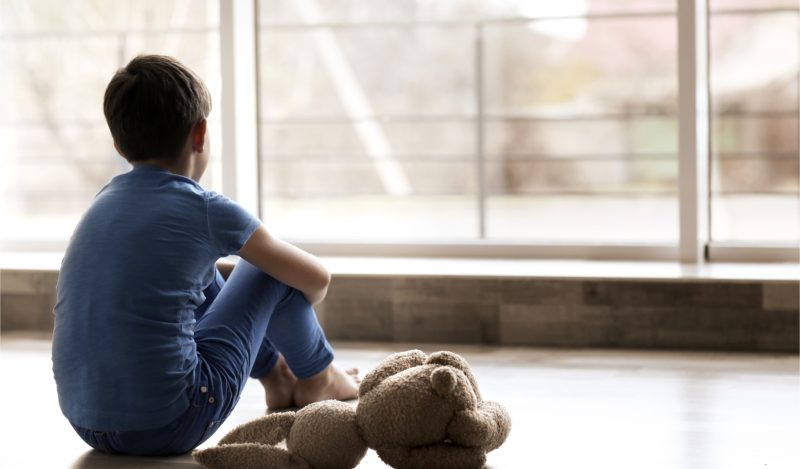[This piece, originally published in Hebrew and now appearing in English for the first time, is by Asa Kasher (Professor Emeritus of Professional Ethics at Tel Aviv University), Yogev Amitai (Principal of “Simaney Derech [milestones]” elementary school in kibbutz Ma’abarot), and Shahar Gavish (former mathematics and physics teacher).]
It is children who have paid the heaviest price over the last two years, mainly due to misguided COVID-19 policies. The enormous harms will be felt in the future, but the moral reckoning and the attempt to heal should begin now. And the moral responsibility is a blot on our society.
In 2000, James Heckman received the Nobel Prize in Economics for his research on the economic impact of education at a young age. Professor Heckman’s research has found that the younger the age at which high-quality education is offered, the higher its contribution to the child’s future income.
Unfortunately for our children, there is no compensation for lost years of education. The Heckman equation has given us an important quantitative tool for assessing education at a young age as an economic investment.
In September 2020, the OECD published a research-based assessment showing that the loss of three months of schooling due to the closure of schools in times of crisis is equivalent to the loss of about 2.5-4% of the child’s total future income for the rest of their life.
Have we done enough to prevent our children from losing more than a total of $600 billion of their future lifelong income? Were such harmful consequences taken into account in any of the discussions during the COVID crisis in which decisions were made to close the schools, to close entire classrooms and daycare settings, or to “only” repeatedly isolate children for an entire week?
In November 2020, the Director of the Centres for Disease Control (CDC) announced that the organization does not recommend school closures: “One of the safest places for children up to the age of 12 is school.”
Nevertheless, the Israeli Ministry of Health ignored the CDC’s recommendation and urged decision-makers to close the schools. The Ministry of Education fell asleep on guard duty, stopped advocating for the children’s right to receive essential educational services, and instead worked in the opposite direction by labelling the lockdowns and isolation as “distant learning.” In practice—apart from the enormous difficulty of conducting remote learning effectively, as indicated, among other things, by parents’ reports about their children’s low levels of collaboration during Zoom lessons, or the technical difficulties faced by children who do not have computers or proper network connections in their homes—the main harm caused by the lockdowns and isolation was to the children’s mental health.
At the beginning of the Omicron wave, a policy was imposed on schools in Israel that discriminated among students based on their vaccination status—a strategy that was clearly intended to put pressure on parents to vaccinate their children. Unvaccinated children were punished with isolation, while their friends carried on.
Although quite a few parents vaccinated their children only because of the penalty of isolation and not as a result of trust in the experimental vaccine, broad segments of the public continued to disapprove of the vaccine and remained wary of vaccinating children even as the discriminatory measures persisted. Again, children, parents and educational staff were forced to bear the heaviest costs in Israeli society, with no significant benefits.
This system of measures, which was the first to openly discriminate among children, in flagrant disregard of the principle of equal opportunities in public education, was not repealed at the initiative of the Ministry of Health but despite the Ministry’s clear displeasure—and only as a result of heavy public pressure, including public acts of speaking out by hundreds of school principals and heads of educational institutions who dared to stand up openly and call for the removal of discriminatory measures and the return of children to schools.
An updated World Bank report tells us that the harm due to school closures was much greater than expected: the amount unjustifiably taken from the future of children around the world is estimated at $17 trillion ($17,000 billion).
In addition, the gaps between the haves and the have nots continued to deepen, with children without adequate family and community support experiencing the greatest harm. “Distant learning” was, at best, a partial and inadequate substitute for face-to-face learning.
Alongside the educational impact, the children have been significantly affected emotionally and socially, since the school is, above all, the social framework within which children develop the basic competencies needed for human interaction and social integration.
There is no doubt that the harm to children was due to a desire to protect the adults from a disease that could be particularly dangerous to elderly persons. If the benefit of reducing mortality was very significant, it may have been possible to justify the enormous harms that the children have suffered.
But did school closures in fact contribute to a significant reduction in COVID mortality? A meta-analysis from Johns Hopkins University indicates that all measures of social distancing, masking, lockdowns and isolation combined have not resulted in any significant reduction in COVID mortality.
Unfortunately, it was the children who also paid a heavy price when it came to coercive masking practices. While some of us adults found ways to significantly reduce the daily amounts of time we had to spend masked, our young children, some of whom are only 6 years old, had to wear masks in a nonstop, indiscriminate, ongoing manner every day for about two consecutive years.
On that front, too, no significant benefit of masking has been shown to the public to this day, and there has been no public discussion of the harms to young children, although studies have already demonstrated what is common sense: children who wear masks on an ongoing and continuous basis are at risk of deterioration in their normal development, when it comes to both cognitive-speech function (due to prolonged concealment of facial expressions and non-verbal cues) and to their physical health (headaches, fatigue, itching, rashes, decreased pulmonary ventilation, sleep disturbances, decreased blood oxygen levels and other problems).
In light of all this, as a society, we are called upon to engage in deep self-reflection. We exacted such a heavy toll on the younger generation, when it was clear early on that the harms to them were enormous and the benefits when it came to reducing mortality were insignificant.
The road to healing and rebuilding ahead is still long, but as a first step we must take responsibility, admit that we have lost our way, and ask our children for heartfelt forgiveness. At the same time, we must direct massive resources toward our children in order to repair the harm of the past two years, in both the socio-emotional and the educational spheres.
Originally published in Hebrew
Join the conversation:


Published under a Creative Commons Attribution 4.0 International License
For reprints, please set the canonical link back to the original Brownstone Institute Article and Author.









